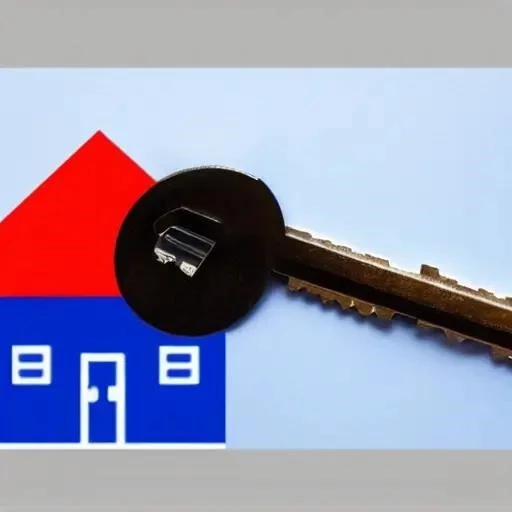For many homeowners, their property represents far more than just a place to live; it’s often their most significant and strategically overlooked asset. While the concept of mortgaging a home you already fully own might sound counterintuitive, it is, in fact, a remarkably powerful financial maneuver that can unlock substantial capital. Imagine your home not merely as a sanctuary but as a robust financial engine, capable of fueling your aspirations, consolidating debt, or even funding ambitious new investments. This isn’t about taking on unnecessary risk; it’s about intelligently leveraging accumulated equity to forge a brighter, more secure financial future. By understanding the mechanisms available, homeowners are discovering unprecedented opportunities to transform their property’s latent value into tangible, actionable resources.
The ability to access the equity built within your home opens a world of possibilities, from tackling high-interest debts to financing critical home improvements that further boost property value. Whether you’ve diligently paid down your original mortgage, or your home’s market value has simply appreciated significantly over time, that equity represents a considerable reservoir of wealth. This strategic financial planning empowers individuals to take control, turning years of prudent ownership into immediate financial flexibility. Rather than viewing your home as a static asset, consider it a dynamic tool, constantly accumulating potential that, when strategically accessed, can profoundly impact your financial trajectory. It’s a testament to the enduring power of real estate ownership in building lasting wealth and opportunity.
Here’s a breakdown of the primary methods homeowners can employ to mortgage a house they already own, transforming equity into accessible funds:
| Strategy | Description | Best For | Key Considerations | Reference Link |
|---|---|---|---|---|
| Cash-Out Refinance | Replacing your existing mortgage with a new, larger one, and receiving the difference in cash. This is based on your home’s current appraised value. | Homeowners seeking a large, lump sum of cash, potentially lower interest rates on their entire mortgage, or debt consolidation. | Involves new closing costs, restarts the mortgage term, and requires a strong credit score and sufficient equity. Your primary mortgage balance increases. | CFPB: Refinance Your Mortgage |
| Home Equity Loan (HEL) | A second mortgage that allows you to borrow a fixed amount against your home’s equity, paid out as a lump sum. Typically has a fixed interest rate. | Those needing a specific, one-time amount for a defined project (e.g., major renovations, tuition fees) and preferring predictable monthly payments. | Adds a second monthly payment, typically has closing costs, and uses your home as collateral. Interest rates are generally higher than primary mortgages. | Investopedia: Home Equity Loan |
| Home Equity Line of Credit (HELOC) | A revolving credit line, similar to a credit card, secured by your home. You can borrow, repay, and re-borrow funds up to a set limit over a draw period. | Individuals needing flexible access to funds over time for ongoing expenses (e.g., staggered home improvements, emergency fund access). | Often has variable interest rates (can increase), uses your home as collateral, and requires careful management to avoid accumulating excessive debt. | CFPB: Home Equity Lines of Credit |
A cash-out refinance, for instance, is an incredibly effective strategy for homeowners looking to not only access a significant lump sum but also potentially secure a lower interest rate on their entire mortgage. By replacing your existing loan with a new, larger one, you can effectively consolidate high-interest debts, finance a substantial home renovation, or even invest in a new venture, all while potentially reducing your monthly outgoings. This approach can be particularly compelling in a declining interest rate environment, offering a dual benefit of cash access and reduced long-term borrowing costs, empowering homeowners to reshape their financial landscape with a single, strategic move.
For those with a specific, well-defined financial need, a Home Equity Loan (HEL) presents a compelling alternative. Unlike a refinance that replaces your entire mortgage, a HEL is a second mortgage taken out against your home’s equity, providing a lump sum with a fixed interest rate. This predictability in monthly payments makes it an ideal choice for funding significant, one-time expenditures like a child’s college tuition, a major home addition, or consolidating existing personal loans into a more manageable payment. The clarity and stability offered by a fixed-rate HEL allow for meticulous budgeting and financial planning, giving homeowners peace of mind as they address their most pressing financial goals.
Alternatively, a Home Equity Line of Credit (HELOC) offers unparalleled flexibility, functioning much like a revolving credit line secured by your home. This dynamic option allows homeowners to draw funds as needed, up to an approved limit, repaying and re-borrowing over a specified draw period. This makes a HELOC an ideal financial Swiss Army knife for ongoing projects, unexpected emergencies, or even as a robust standby fund for future opportunities. While typically featuring variable interest rates, the adaptability of a HELOC empowers homeowners to manage their finances with a fluid approach, making it an indispensable tool for those valuing agility in their financial planning.
As noted by Dr. Eleanor Vance, a leading financial strategist specializing in consumer lending, “The modern homeowner is increasingly sophisticated, recognizing that their property isn’t just a static asset, but a dynamic financial instrument. Leveraging equity responsibly, whether through a cash-out refinance for debt consolidation or a HELOC for strategic investments, represents a potent pathway to financial empowerment and wealth creation.” Industry trends underscore this shift, with a growing number of homeowners strategically utilizing their equity to fund business startups, invest in further education, or even build secondary income streams, transforming their primary residence into a powerful springboard for future success.
Ultimately, the decision to mortgage a house you own is a deeply personal one, laden with both immense potential and critical considerations. By meticulously evaluating your financial goals, understanding the nuances of each available product, and consulting with trusted financial advisors, you can confidently navigate these options. The future is bright for homeowners prepared to harness the latent power within their properties, transforming accumulated equity into a catalyst for fulfilling their most ambitious financial aspirations. This isn’t just about borrowing; it’s about intelligently investing in your own future, using the foundation you’ve already built to construct an even more prosperous tomorrow.






